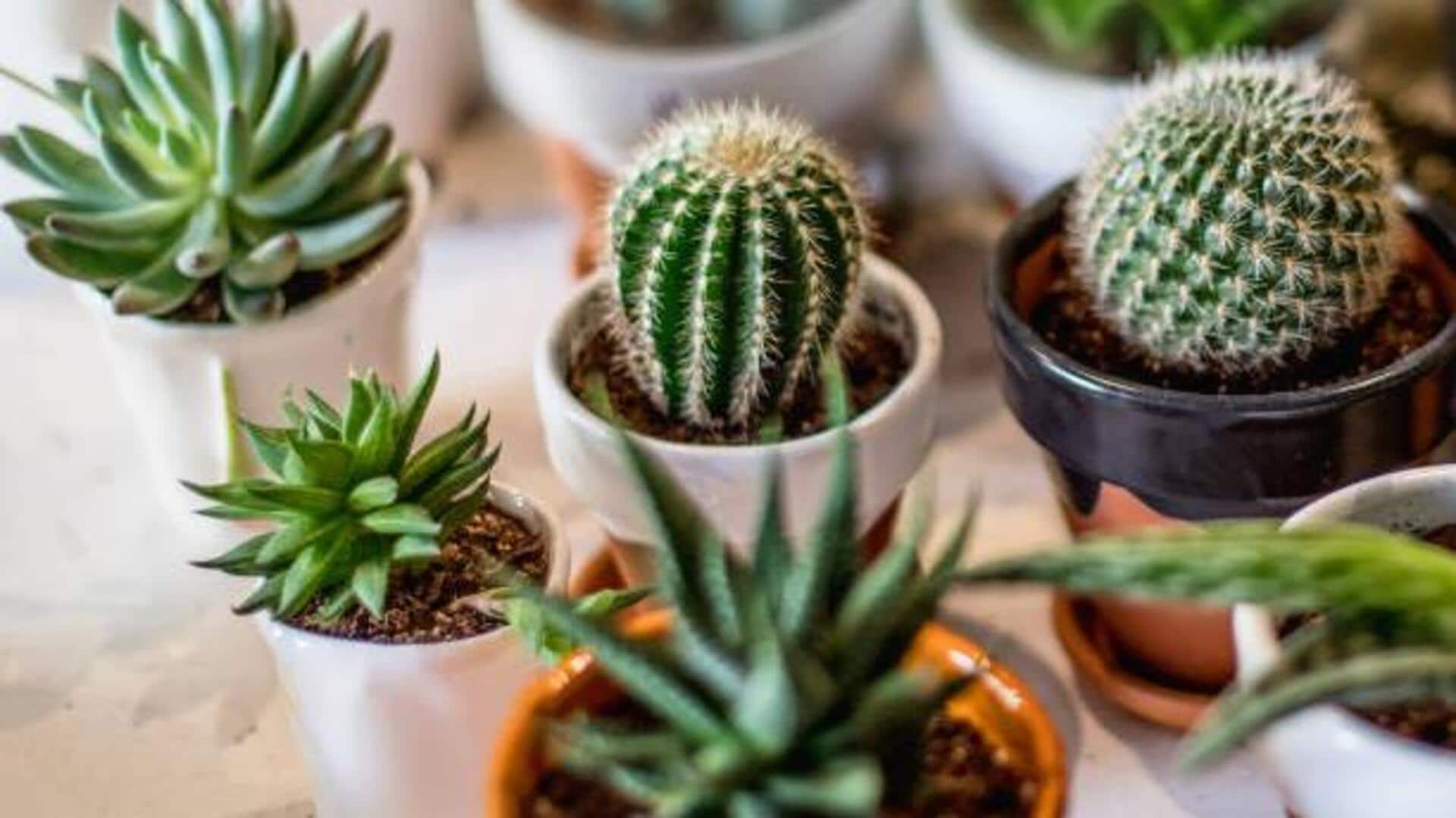
How to repot succulents
What's the story
Repotting succulents is essential to keep them healthy and growing. With time, these plants outgrow their pots or deplete the soil's nutrients. Repotting gives them fresh soil and more room to grow. However, if done right, the process can be a breeze. Here are some expert tips to help you repot your succulents without any trouble.
Timing
Choose the right time for repotting
The best time to repot succulents is during their active growing season, which is usually in spring or early summer. During this period, the plants are more resilient and can recover from the shock of being transplanted more easily. Avoid repotting during the dormant seasons, such as winter, when succulents are less likely to thrive after being moved.
Soil choice
Select appropriate soil mix
Succulents require well-draining soil to prevent root rot. A mix specifically designed for cacti and succulents is ideal, as it contains sand or perlite for improved drainage. You can also make your own mix by adding sand or perlite to regular potting soil in equal parts. This ensures that water flows freely through the soil, while retaining enough moisture for the plants.
Container selection
Use suitable containers
When selecting containers for your repotted succulents, make sure they have drainage holes at the bottom. This allows excess water to escape and prevents roots from sitting in moisture, which can lead to rot. Terracotta pots are a popular choice as they absorb some moisture from the soil, keeping it dry between watering sessions.
Root care
Handle roots carefully
While repotting, gently remove your succulent from its old pot without damaging its roots. If roots are tightly bound or circling around themselves, prune them lightly with sterilized scissors or pruning shears to encourage new growth. Avoid excessive cutting as this could stress the plant too much.
Post-repotting care
Water wisely after repotting
After repotting your succulent, wait a week before watering it again. This allows any damaged roots during transplanting time to heal properly without being overwhelmed by too much moisture too soon after being moved into new surroundings. During this recovery period, keep an eye on humidity levels around the plant's environment. Adjust accordingly if necessary, using fans or dehumidifiers if needed, to maintain optimal conditions conducive towards successful acclimatization efforts overall.